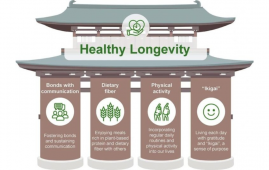

The healthy donors of these cells came from the University College London Hospital (UCLH), the Royal Free Hospital, Great Ormond Street Hospital (GOSH), and children (0–11 years old), adults (30–50 years old), and, for the first time, senior citizens (over 70 years old).
After that, the cells were cultivated using specialized methods, which allowed them to proliferate back into the various cell types that were first found in the nose. The group identified 24 different types of epithelial cells using single-cell RNA sequencing techniques, which allow scientists to determine the various genetic networks and roles of thousands of individual cells. After that, cultures from every age group were either SARS-CoV-2-infected or mock-infected.
After three days, the researchers discovered that the children’s NECs reacted swiftly to SARS-CoV-2 by raising interferon, the body’s first defense against viruses, which limited the virus’s ability to replicate. But as people aged, this early antiviral effect diminished.
The researchers also discovered that NECs from elderly people suffered from higher cell shedding and damage in addition to producing more infectious virus particles.
Younger persons usually have lesser symptoms, which could be explained by the robust antiviral response in their NECs. On the other hand, the stronger viral replication and more damage in NECs from senior people may be related to the higher severity of illness seen in older persons.
Dr. Claire Smith, the associate professor in charge of the project at the UCL Great Ormond Street Institute of Child Health, stated: “Our research reveals how the type of cells we have in our nose changes with age, and how this affects our ability to combat SARS-CoV-2 infection. This could be crucial in developing effective anti-viral treatments tailored to different age groups, especially for the elderly who are at higher risk of severe COVID-19.”
Co-senior author, Dr Kerstin Meyer (Wellcome Sanger Institute), said: “By carrying out SARS-CoV-2 infections of epithelial cells in vitro and studying the responses with single-cell sequencing, we get a much more detailed understanding of the viral infection kinetics and see big differences in the innate immune response between cell types.”
The study emphasizes how vital it is to take age into account while studying and treating infectious diseases.
Dr. Marko Nikolic, a co-senior author from the UCL Division of Medicine, stated: “It is fascinating that when we take away immune cells from nasal samples and are only left with nasal epithelial cells grown in a dish, we are still able to identify age-specific differences in our body’s response to the SARS-CoV-2 between the young and elderly to explain why children are generally protected from severe COVID-19.”
Dr Smith added: “Understanding the cellular differences at the initiation of infection is just the beginning. We now hope to investigate the long-term implications of these cellular changes and test therapeutic interventions using our unique cell culture model. This ‘gold-standard’ system is only possible with the support of our funders and the willingness of participants to provide their samples.”
The group recommends that future studies look into how aging affects the body’s ability to fight off other viral illnesses.
For more information: Age-specific nasal epithelial responses to SARS-CoV-2 infection, Nature Microbiology, doi: 10.1038/s41564-024-01658-1
more recommended stories
 Poor Kidney Function and Alzheimer’s Biomarkers Explained
Poor Kidney Function and Alzheimer’s Biomarkers ExplainedPoor kidney function may influence levels.
 Perinatal Mental Health Challenges Highlighted in New Study
Perinatal Mental Health Challenges Highlighted in New StudyMental Health Challenges in New Parents:.
 Walking Speed Before Hip Replacement Predicts Recovery
Walking Speed Before Hip Replacement Predicts RecoveryNew Evidence Points to a Simple,.
 Neuroblastoma Drug Combo Extends Survival in Models
Neuroblastoma Drug Combo Extends Survival in ModelsA Promising Shift in High-Risk Neuroblastoma.
 How Soybean Oil Impacts Weight Gain and Metabolism
How Soybean Oil Impacts Weight Gain and MetabolismWhy Soybean Oil May Affect Metabolism.
 Coffee and Cognitive Function: Evidence Review
Coffee and Cognitive Function: Evidence ReviewA new narrative review in Cureus.
 World Summit Outlines Core Principles for Healthy Longevity
World Summit Outlines Core Principles for Healthy LongevityWhy Healthy Longevity Demands a New.
 Colorectal Cancer Screening Rates Low in Adults 45–49
Colorectal Cancer Screening Rates Low in Adults 45–49Recent UCLA research reveals that colorectal.
 Gut Immune Cells and Long-Lasting Antiviral Protection.
Gut Immune Cells and Long-Lasting Antiviral Protection.Breakthrough Findings on How Gut Immune.
 Mild Pancreatic Duct Dilatation Signals Higher Cancer Risk
Mild Pancreatic Duct Dilatation Signals Higher Cancer RiskEarly Structural Changes Offer Critical Clues.

Leave a Comment